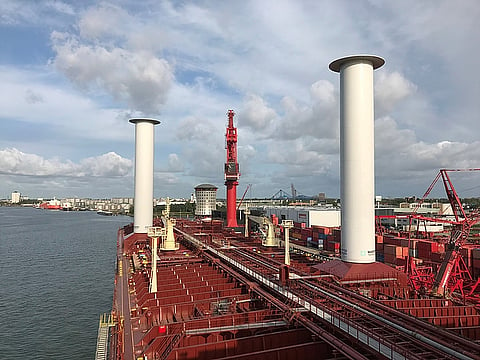

Two 30-metre tall rotor sails have been installed onboard the Maersk tanker Maersk Pelican.
The rotor sails are large, cylindrical mechanical sails that spin to create a pressure differential – called the Magnus effect – that propels the vessel forward. The rotor sails will provide auxiliary wind propulsion to the vessel, designed to optimise fuel efficiency by reducing fuel consumption and associated emissions by seven to 10 per cent on typical global shipping routes.
The rotor sails were built by Finnish auxiliary wind propulsion engineering company, Norsepower, which partnered with Maersk Tankers, Energy Technologies Institute, and Shell Shipping and Maritime for the project.
The rotor sails have completed land testing, including testing various mechanical and performance criteria, and are the first rotor sails to be class approved for use on a product tanker vessel.
The Maersk Pelican is a long range 2 (LR2) product tanker. According to Norsepower, the rotor sails are the world's largest at 30 metres tall by five metres in diameter, and were installed on the vessel in the port of Rotterdam. The first voyage with the rotor sails installed is scheduled to commence shortly.
Independent evaluation of the long-term financial and technical viability of the technology will now take place before technical and operational insights as well as performance studies are published.
